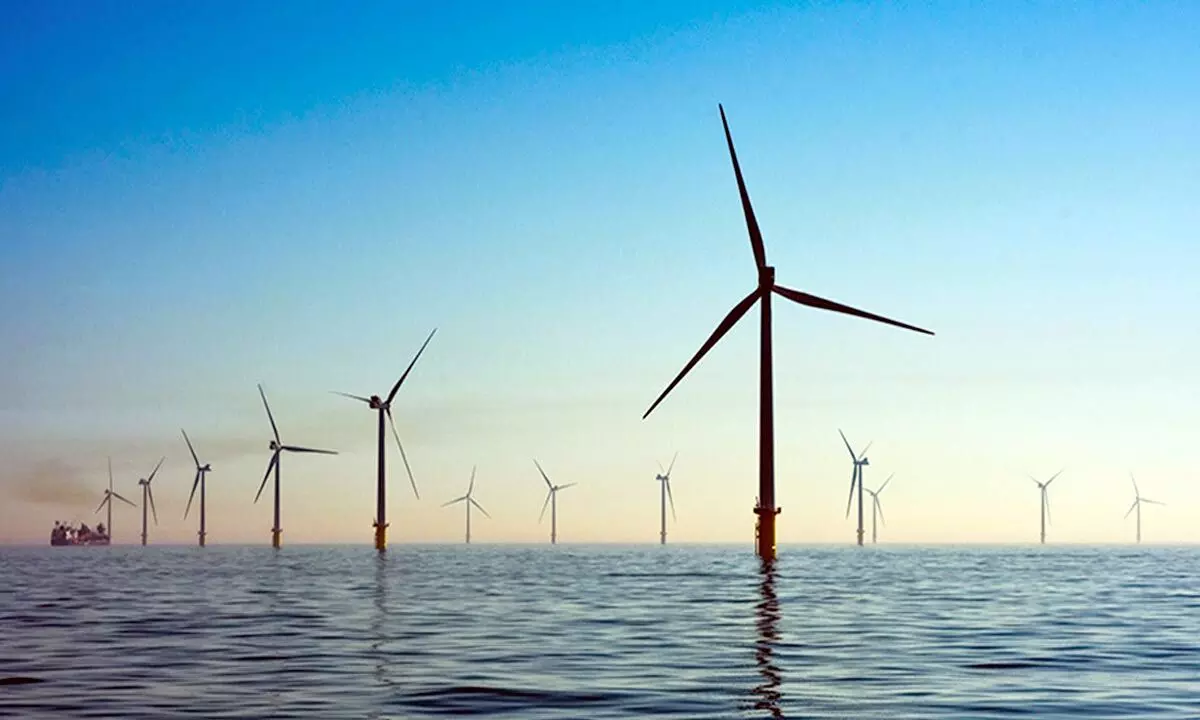Now, 3-pronged strategy for offshore wind energy projects
MNRE identifies 8 zones off coasts of Gujarat & TN for fast-track development of offshore wind farms; The power generated from such projects shall be either used for captive consumption or sold under PPA or on power exchanges
image for illustrative purpose

New Delhi: Eight zones each off the coasts of Gujarat and Tamil Nadu have been identified as potential offshore wind energy zones. The Ministry of New & Renewable Energy (MNRE) has proposed three models for the fast-track development of offshore wind farms, official sources told Bizz Buzz.
Offshore wind energy projects will begin providing power worth 1 GW in the next fiscal, which is estimated to grow to 37 GW by 2029-30 fiscal.
The first model is for the demarcated offshore wind zones, for which the National Institute of Wind Energy (NIWE) has carried out detailed studies and surveys. The NIWE, which is under the MNRE, is the nodal agency for the development of offshore wind energy in India.
Currently, Zone B3 (365 sq km) off the coast of Gujarat shall be considered in the first phase of Model I.
Preliminary studies carried out by the NIWE across the coastline of India indicate good potential both off the southern tip of the country and the west coast for offshore wind farm development in India. The offshore wind potential was assessed by Facilitating Offshore Wind in India (FOWIND) in consortium with NIWE as a knowledge partner. FOWIND is a project funded by the European Union.
Model II is for the identified offshore wind sites by the NIWE for which detailed studies and surveys have not been carried out, sources said. Offshore wind developers may select a wind site within the identified zone and carry out required studies and surveys with the approval of the MNRE, subject to the clearances from various ministries and departments.
The MNRE through its implementing agencies will come up with bids for procurement of 2 GW of offshore wind power capacities tentatively in 2024-25. Those developers who have carried out the studies and survey will be allowed to participate in the bidding for the development of such projects.
The necessary Central financial assistance in the form of Viability Gap Funding (VGF) for initial projects would be available to achieve a predetermined power tariff for these 2 GW of offshore wind power capacity. The developers who have carried out studies and surveys may also decide to develop offshore wind power projects by themselves for sale of power on a merchant basis or under bilateral agreements with consumers under the open access mechanism or for captive consumption. For such projects, the benefits of provision of power evacuation infrastructure from the offshore pooling delivery point, waiver of transmission charges, renewable energy credits with multipliers and carbon credit benefits shall be applicable.
In Model III, the NIWE shall identify from time to time large offshore wind zones within the EEZ, but not covered either under Model I or Model II. The proposed offshore wind sites demarcated within these zones would be allocated for a fixed period on a lease basis.
Project development shall be carried out by the prospective developer in this zone. The power generated from such projects shall be either used for captive consumption under open access mechanism or sold to any entity through a bilateral power purchase agreement or sold through power exchanges.

